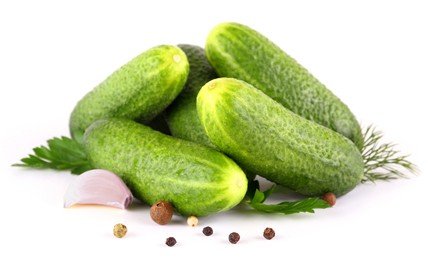Our products
|
|
| Silverskin onions | |
| Gherkins | |
| Capers | |
| Atjar | |
| Beetroot | |
| Red cabbage | |
The gherkin is a fruit of the plant Cucumis sativus and belongs to the family of the cucumber. Gherkins grow on a typical pendulum plant, similar to the much better known cucumber, tomato and strawberry plant. Cultivation takes place on flat fields or vertically on a wire. Where cross-fertilization used to be necessary, it is not always necessary nowadays thanks to parthenocarpic varieties. In Europe the growing season is from June to September. Plants create flowers under which a small fruit grows. Depending on the amount of water and sun, the gherkins grow into large fruits in a few days, after which they are picked. Nowadays, the plants are supplied with water through drip irrigation, so that the plant never lacks moisture or the right fertilizers.
The fruit has approximately a length-to-thickness ratio of 3: 1. A wide range of sizes is distinguished. These are indicated in different ways, usually in lengths or number per kg, the latter being the most practical. The grades range from very small, 250-400 pieces per kg, to very large, 6-8 pieces per kg. The latter category is also widely used for sliced gherkins (gherkin sticks, broad-beamers and dill chips).
Gherkins naturally have a limited flavour, the taste is similar to a flat, slightly bitter cucumber flavor, but unlike the cucumber, the gherkin is rarely consumed as a fresh vegetable. Gherkins are freshly poured in water, vinegar, sugar, salt, spices and natural aromas after they have been washed, after which they are pasteurised to optimise their conservation.
Mattheeussens-Wido B.V. has been familiar with this process for many decades. In the 1920s, we started trading in various types of pickled acids and in 1968 the production of acid products was started in Ossendrecht. Mattheeussens-Wido B.V. offers the complete assortment, different flavours, sorts, sizes and both whole and cut gherkins.




